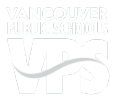Curriculum and instruction guides: Middle school
Secondary grade-level expectations
What a student should know: sixth through eighth grades
You can help your child succeed by understanding what your student is learning at school and supporting those activities at home. Grade-level expectations describe what a student should know and be able to do in all subject areas. Teachers focus curriculum, instruction and assessments on the grade-level expectations.
If you have questions about specific classroom activities or school programs, please contact your child’s teacher(s).
Assessing learning
In the Vancouver Public Schools, students are assessed on their progress toward meeting the Washington State Learning Standards for literacy and math as well as state content standards in social studies, science, the arts and PE/health. Teachers provide clearly articulated and appropriate expectations for their students that are aligned with these standards and that are appropriate for each course. A wide variety of quality assessments are used to reflect student proficiency, including classroom-based assessments throughout each trimester.
Reporting practices
There are many opportunities for schools to communicate about student learning throughout the school year. Conferences are held during the year to allow parents, students and educators to share information and set goals for the remainder of the school year. At the end of each trimester, report cards are sent home which communicate students’ progress in each of their courses as they work toward meeting learning standards.
Curriculum guides
These guides are designed to give you an overview of what your child will be learning at each grade level.
Resources
Curriculum guides
Elementary school
Grades K-5 curriculum guides
Middle school
Grades 6–8 curriculum guides
